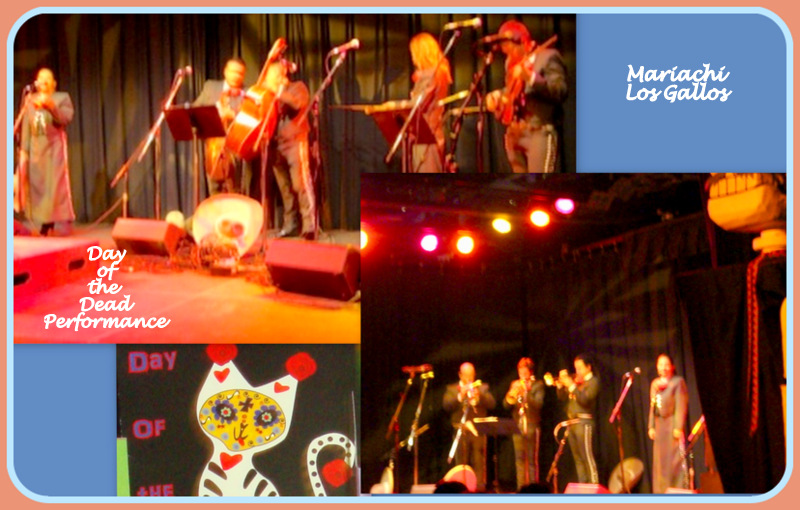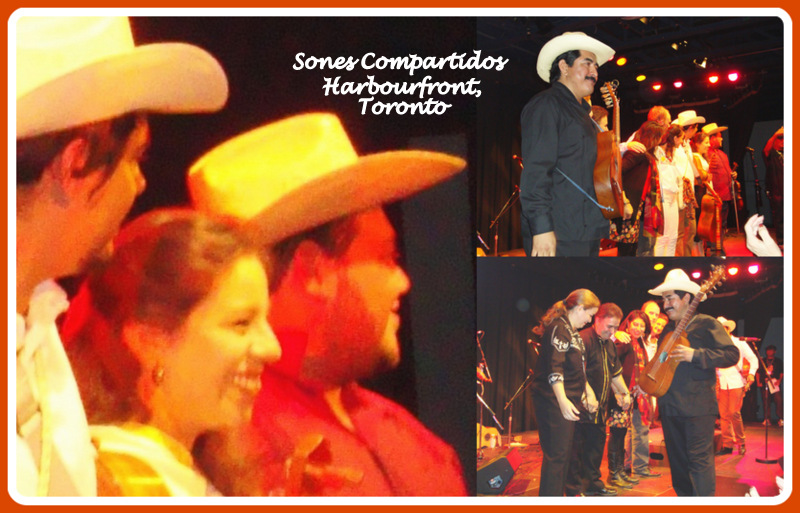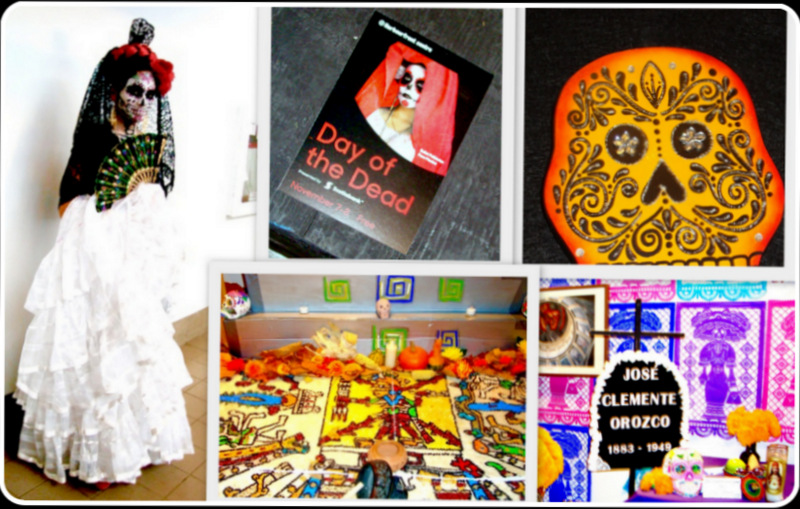
Is not to die.
~Thomas Campbell, “Hallowed Ground”
What a way to remember one’s dead! The Day of the Dead or Dia de Muertos celebrations took place here in Toronto yesterday at Harbourfront and is taking place again today. It’s a two day Festival which has its roots in Mexico. The atmosphere was festive rather than mournful – although all the paraphernalia surrounding death was visible there. “The Mexican holiday of Día de los Muertos, or Day of the Dead, takes place over the first two days of November. Its origins are a mixture of Native American traditions and a set of Catholic holidays. While the holiday’s observances include spending time in cemeteries, making shrines to the dead, and displaying artistic representations of skulls and skeletons, the occasion is festive, rather than morbid. Death isn’t seen as the end of one’s life, but as a natural part of the life cycle; the dead continue to exist much as they did in their lives, and come back to visit the living every year.” (Factmonster.com) Would that we would all be like the Mexicans who are able to have joyful and celebratory feelings about death and dying. This is truly a blessing.
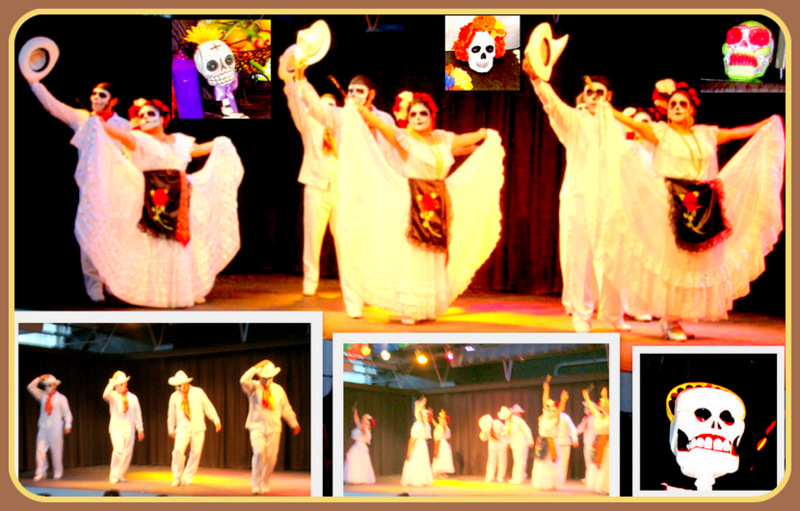
In almost all cultures, there is a reverence, respect, and love for the dead which translates into family members visiting and tending graves, taking flowers, and offering prayers and thoughts for the dead. This happens all year. In Mexico, All Souls Day (November 2nd) is a public holiday. All Souls’ Day (Los Fieles Difuntos), on November 2, and All Saints’ Day ( Día de Todos los Santos), on November 1, are bigger than Halloween in Mexico. It’s also called the Day of the Dead (Día de los Muertos). I would imagine that a celebration of this nature would call for lots of preparation and that this would take place over a period of a few months before.
All Saints Day and All Souls Day, as we here in Canada know it, is a day when there are services in Catholic/Protestant churches and usually the names of deceased relatives in the parish are read out as part of the service. It is also a time to honour all the departed. Many people also visit the graves of their loved ones and take flowers. It is generally a sad day for most people. There doesn’t seem to be the same joyfulness in the celebration as in Mexico or, at least, I don’t get that sense when I go to church. It reminds me of what Steve Jobs said in his address to the graduating classes at Stanford. “No one wants to die. Even people who want to go to heaven don’t want to die to get there. And yet death is the destination we all share. No one has ever escaped it. And that is as it should be, because Death is very likely the single best invention of Life. It is Life’s change agent. It clears out the old to make way for the new.”
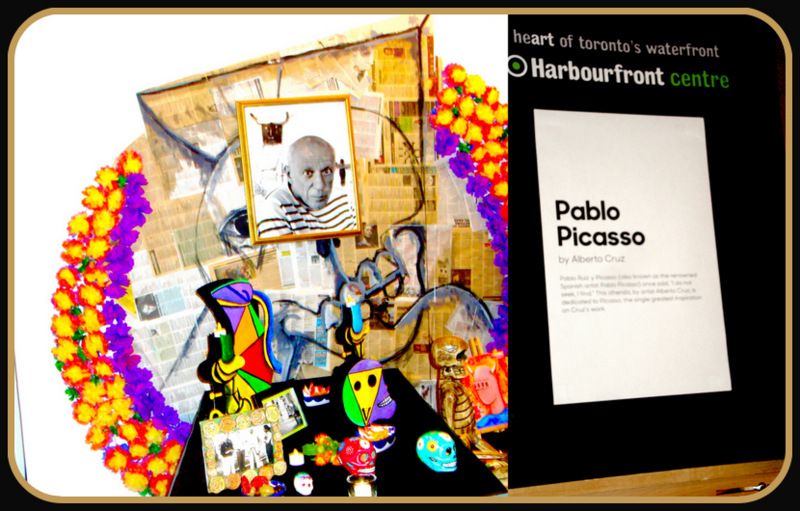
The ofrenda is set on a table, covered with a fine tablecloth, preferably white. Then the papel picado, cut tissue paper, is set over the cloth. (inside-Mexico.com)
Back to the Day of the Dead festivities at Harbourfront and what I learnt and saw there. Ofrendas or altars at Harbourfront were customized according to who they were for. As you can see above, there was one there for Pablo Picasso. On Picasso’s, there are photographs, art work and newspaper clippings, along with food, fruit, flowers, candles, and sugar skulls. Although Picasso was a Catholic, I don’t see any cross or other religious symbol on his altar. His ofrendas was artistically put-together because he was an artist. It was thoughtfully put together to honour his memory and the legacy that he left.
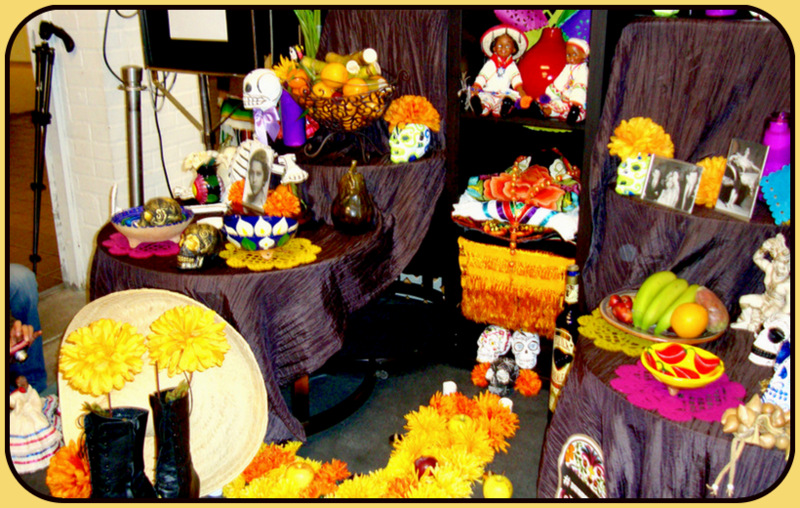
The ofrenda above is for Amalia Navarro who was a well-known choreographer in Mexico and was instrumental in founding Mexico’s Ballet Moderno. She is highly esteemed by all dancers. There’s a photo of her there as well as the usual ofrendas items such as flowers, fruit, candles, and skulls. There’s also a hat, some folded clothing, boots, ornaments, dolls, and other personal items. Perhaps, there’s a lot more known about her as a result of who she was. There was a huge cross on her ofrenda which is only partly showing in this image. As you have probably gathered by now, one’s religious or non/religious affiliation is also a factor in the kind of ofrenda that is prepared for you. What you see in the image above is only part of her ofrenda. Below you are able to see another part.
You can see the Virgin Mary here and the two memorial candles on either side. This altar had different tiers and was huge. You can also see a papel picado cut-out right behind the Virgin Mary. It is a very popular art form in Mexico using paper and is used by Mexicans to decorate. Many different centres were set up for different activities.
In the Kids’ Crafts area at Harbourfront, old and young alike were learning different crafts such as flores de muertos (marigolds), and masks. There was also Day of the Dead Facepainting. Another popular area was the Calavera (Sugar Skull) Decorating. There were many other activities listed on the program but time did not permit to try them all.
Last, but not least, the Mariachi Los Gallos, which is noted to be one of Canada’s best mariachi bands gave an excellent performance in the Brigantine Room. Their grand finale was “Cielito Lindo” which the audience had been asking for and left everyone happy. There was also a Mexican jam session (folk) with two separate groups which was absolutely delightful. I gathered they were from the Veracruz area. They spoke no English but had a very capable bilingual leader who had been a student of theirs. I will share a few images of these two groups below to bring this post to a close.
I realize that we can learn so much from other cultures and countries about how they experience life and death. We may even be able to incorporate some of these in our own practices. Our own thoughts and feelings about such an important happening in life – about death – may even change. I know mine did. I definitely want more singing and dancing when my time comes. Hope you enjoyed “Day of the Dead.”
And when great souls die,
after a period peace blooms,
slowly and always
irregularly. Spaces fill
with a kind of
soothing electric vibration.
Our senses, restored, never
to be the same, whisper to us.
They existed. They existed.
We can be. Be and be
better. For they existed.”
― Maya Angelou


